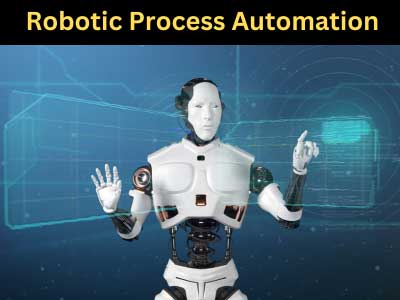Key Takeaway
AI is transforming manufacturing by automating processes and providing valuable data insights. AI improves productivity by predicting maintenance needs, reducing downtime, and enhancing quality control. AI-powered systems optimize production schedules, detect defects more effectively, and streamline operations. This results in significant cost savings and improved efficiency. Additionally, AI integration can improve customer service by enabling smarter order management and personalization. A major trend is the rise of smart factories, where machines communicate in real-time. Although there are challenges like high implementation costs, AI offers immense potential for innovation and growth in manufacturing.
Current Applications of AI in Manufacturing
Right now, AI is being utilized across various stages of the manufacturing process. For example, robots equipped with AI are automating assembly lines, improving efficiency, and reducing human error. These AI-powered machines can adapt to changes in the production process and self-correct in real-time. Beyond robotics, AI is being applied to manage data analytics, helping companies make informed decisions based on insights from massive datasets. AI is also being used in product design, where machine learning algorithms help generate new designs based on specific criteria and constraints. Factories are increasingly turning to AI to manage inventory systems, streamline logistics, and minimize downtime. These real-world applications are just the beginning, with AI poised to bring even more sophisticated capabilities to manufacturing in the coming years.

AI-Driven Predictive Maintenance
Predictive maintenance powered by AI is revolutionizing how manufacturers maintain their equipment. In traditional setups, maintenance is either scheduled at regular intervals or performed after a failure occurs. However, both approaches have their drawbacks. Scheduled maintenance can result in unnecessary downtime, while reactive maintenance leads to unexpected breakdowns, halting production entirely. With AI, manufacturers can use real-time data from sensors embedded in machines to predict when a failure is likely to happen.
This predictive capability means that repairs and maintenance can be scheduled only when they are truly needed, reducing both downtime and maintenance costs. For instance, machine learning algorithms can analyze vibration data, temperature readings, and other factors to predict when a component is about to wear out. This approach helps ensure that machinery remains in peak condition without interrupting the workflow. The adoption of AI-driven predictive maintenance is already helping companies improve efficiency and extend the lifespan of their equipment, which ultimately enhances productivity and lowers operational expenses.
Enhancing Quality Control with AI
In the manufacturing world, quality control is a critical factor that directly affects customer satisfaction and operational efficiency. Traditionally, quality control was a labor-intensive process that involved human inspectors visually checking products for defects. While effective, this method was time-consuming and prone to human error, especially in high-volume manufacturing. AI has revolutionized this aspect of manufacturing by introducing automated visual inspection systems powered by machine learning algorithms.
AI-powered quality control systems can process images of products in real-time, identifying defects such as surface blemishes, incorrect dimensions, or missing components with greater accuracy than human inspectors. These systems not only speed up the inspection process but also improve the consistency of quality checks. Over time, the machine learning models that power these systems improve as they are exposed to more data, making them even better at detecting anomalies. With AI handling quality control, manufacturers can ensure higher levels of product consistency, reduce waste, and deliver better products to their customers.
The Role of AI in Supply Chain Optimization
AI is also playing a transformative role in optimizing supply chains, a crucial component of the manufacturing process. Managing the complexities of supply chains—inventory levels, logistics, and demand forecasting—has always been a challenging task for manufacturers. AI-powered tools can now analyze vast amounts of data from various sources in real-time, offering insights that enable more accurate demand forecasting and better inventory management.
For example, machine learning algorithms can identify patterns in consumer demand, allowing manufacturers to adjust production levels accordingly. This not only reduces the risk of overproduction but also minimizes stockouts. In logistics, AI optimizes delivery routes by analyzing traffic patterns, fuel consumption, and weather conditions, resulting in faster and more efficient deliveries. By streamlining these processes, manufacturers can save both time and money, while also improving customer satisfaction. AI-driven supply chain optimization allows businesses to become more agile and responsive to market demands, giving them a competitive edge in today’s fast-paced industrial landscape.
Future Trends and Developments in AI for Manufacturing
Looking ahead, the future of AI in manufacturing is filled with possibilities. One of the most exciting trends is the development of smart factories, where AI, IoT, and robotics are integrated to create fully autonomous production environments. In a smart factory, machines communicate with one another, adjusting processes in real-time to optimize production and reduce waste. This shift toward real-time responsiveness could drastically change how manufacturers operate, making them more agile and efficient.
Another emerging trend is the increasing use of AI in sustainability initiatives. As industries aim to reduce their environmental impact, AI can help optimize energy consumption, minimize waste, and improve resource management. Additionally, advancements in natural language processing could enable more intuitive human-machine interactions, allowing workers to communicate more effectively with AI systems. As AI technology continues to evolve, it is expected to bring even more significant innovations to the manufacturing sector, transforming the way products are made and delivered. The future of AI in manufacturing is not only about enhancing productivity but also about creating smarter, more sustainable, and responsive industrial ecosystems.
Conclusion
AI is undeniably transforming the manufacturing industry, and its potential for future growth is immense. From predictive maintenance to quality control, supply chain optimization, and the development of smart factories, AI is making manufacturing faster, more efficient, and more reliable. As technology continues to advance, AI will play an even more critical role in shaping the future of manufacturing. Engineers and manufacturers who embrace these changes will find themselves at the forefront of innovation, ready to harness AI’s full potential in driving business success.
